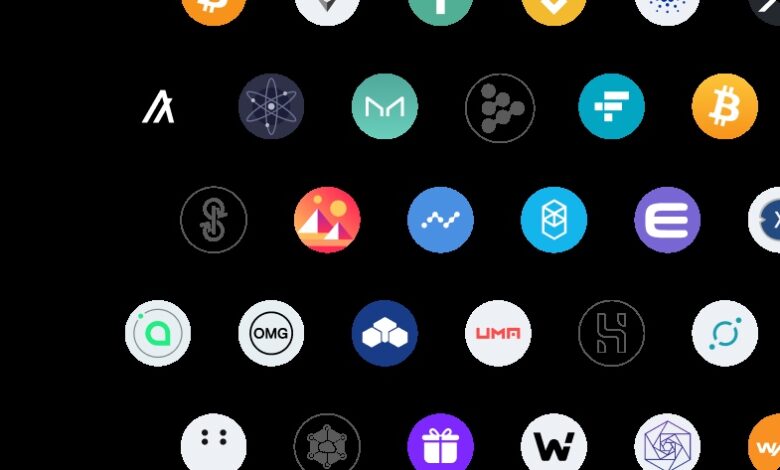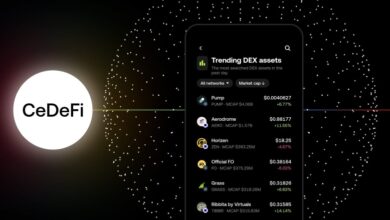Crypto Swaps in 2025: Why Businesses Can’t Ignore Them

Crypto in 2025 is no longer a niche asset class. It has become financial infrastructure that powers global trade, payrolls, and digital ecosystems. From cross-border settlements to in-app transactions, businesses increasingly rely on digital assets. Yet one recurring challenge cuts across industries: conversion. How do you move from one cryptocurrency to another instantly, securely, and without losing users to external platforms?
The global rise of crypto swaps
The answer lies in crypto swaps — and the demand for them is growing fast. Chainalysis reports that global crypto transaction volumes topped $1 trillion in 2024, with an ever-larger share linked to swaps and stablecoin conversions.
In regions facing high inflation, swaps are more than convenience—they’re survival. Argentina closed 2023 with annual inflation exceeding 140%, while Brazil recorded a more modest but still significant 4.62% as per IBGE. In such environments, merchants routinely exchange volatile tokens for stablecoins like USDT or USDC to protect revenue and keep businesses running.
The picture is different but equally urgent in the CIS. Mining pools managing thousands of users face pressure to distribute rewards quickly. By swapping mined BTC into stablecoins inside their own systems, pools cut down on external exchange fees and keep value within their ecosystem.
Meanwhile, in Asia, it’s Web3 entertainment driving adoption. GameFi projects and dApps that integrate in-app swaps see retention rates up to 40% higher. The reason is simple: players don’t want to leave a game or app to make a conversion. Keep them inside, and they stay longer — and spend more.
Across all these markets, one truth is clear: swaps are no longer an add-on. They are infrastructure.
Why exchanges don’t meet business needs
Centralized exchanges remain dominant liquidity hubs, but they weren’t built for seamless third-party integration. APIs are complex, onboarding takes weeks, and fees are stacked. More importantly, sending users away to an exchange is a revenue leak.
Wallet providers know this well: when a user leaves to swap assets elsewhere, churn rises. Mining pools know it too, with studies showing up to 12% of revenue lost when participants convert rewards on external platforms. For media outlets or DeFi trackers, the loss is subtler but no less damaging — missed monetization opportunities when users step away.
Exchanges serve traders. Businesses need something else: a way to keep swaps inside their own product.
EMCD Cryptoswap: built for business
That’s where EMCD Cryptoswap comes in. Rather than outsourcing swaps to third parties, companies can embed EMCD’s swap engine directly into their platform.
Unlike generic APIs, CryptoSwap is infrastructure. It’s already trusted by partners such as Tonkeeper, Tonviewer, and Coinspector, where seamless in-app swaps boost user activity and capture fees that once disappeared externally. Tonkeeper — the largest wallet in the TON ecosystem — uses EMCD technology to deliver conversions without sending users away, resulting in stronger retention, higher volumes, and a new revenue line.
CryptoSwap’s key strengths include: more than 600 supported assets, integration that can be completed in 72 hours, revenue sharing of up to 50% on transaction fees, and flexible deployment options — from branded widgets to fully embedded APIs.
For wallets, that means turning user swaps into income. For mining pools, it means cheaper and faster conversions of rewards. For dApps and DeFi platforms, it’s the ability to scale without having to integrate dozens of blockchains.
Exchanges vs Cryptoswap: a comparison
| Feature | Traditional exchanges | EMCD CryptoSwap |
| User flow | Redirected off-platform | In-app, embedded swap |
| Integration | Complex APIs, weeks to build | Widget, WebView, or API—live in 72h |
| Revenue | Exchange keeps all fees | Partner keeps up to 50% |
| Asset range | Broad, but external | 600+ assets, directly accessible |
| Retention | Drop-off after redirection | Users remain inside the product |
The difference is structural: exchanges are marketplaces, while CryptoSwap is business infrastructure.
Business impact in practice
Consider a crypto wallet with 100 000 active users. If only 30% of them make one swap a week, the result is millions of dollars in annual transaction volume. With EMCD Cryptoswap, those flows stop leaking to third-party services and turn into a stable revenue stream — without extra development.
For mining pools, the economics are even clearer. Pools that handle conversions internally save up to 18% on withdrawal costs, while giving participants faster, cheaper payouts. By fixing profits during market volatility and managing treasury through fast asset conversion, pools protect margins in geographies like the CIS, where fee pressure is high. They also avoid slippage and execution risks that are common on external exchanges.
GameFi and dApps benefit through user behavior. Adding in-app swaps keeps players one click away from the assets they need, leading to longer play sessions, higher engagement, and up to 40% stronger retention compared to projects without swap integration.
In media and DeFi trackers, swaps unlock monetization. Instead of directing users to external services like Changelly (where they may spend millions annually in fees), these platforms can embed swaps and reclaim that revenue. For publishers, it’s a way to turn traffic into income; for DeFi dashboards, it’s a way to keep liquidity and users inside the ecosystem.
Even exchanges can benefit. By adding EMCD’s swap engine as a liquidity back-end, niche or regional trading platforms gain access to 600+ coins without sourcing liquidity pair by pair. This strengthens their product catalog while lowering operational overhead.
Integration made simple
EMCD approach is deliberately lightweight. Businesses can launch through a quick WebView, a custom-branded widget, or a full API for enterprise deployments. Liquidity, compliance, and support come built-in, allowing companies to go live in days, not months.
Once running, swaps not only generate revenue but also strengthen loyalty. Partners report ARPU increases of 15–25% alongside lower churn and higher satisfaction.
A three-step path to value
- Define your use case — wallet, mining pool, dApp, or DeFi service.
- Select your integration format — WebView, widget, or API.
- Go live within 72 hours — and start monetizing swaps immediately.
Conclusion
By 2025, crypto swaps have shifted from optional feature to essential infrastructure. Companies that still outsource conversions to third-party exchanges are leaving both revenue and users behind. EMCD Cryptoswap offers a plug-and-play alternative: seamless integration, predictable monetization, and a smoother experience for users.
For wallets, mining pools, DeFi platforms, and dApps, the choice is clear. Keep swaps in-house. Increase margins. Deliver the convenience your users expect.





